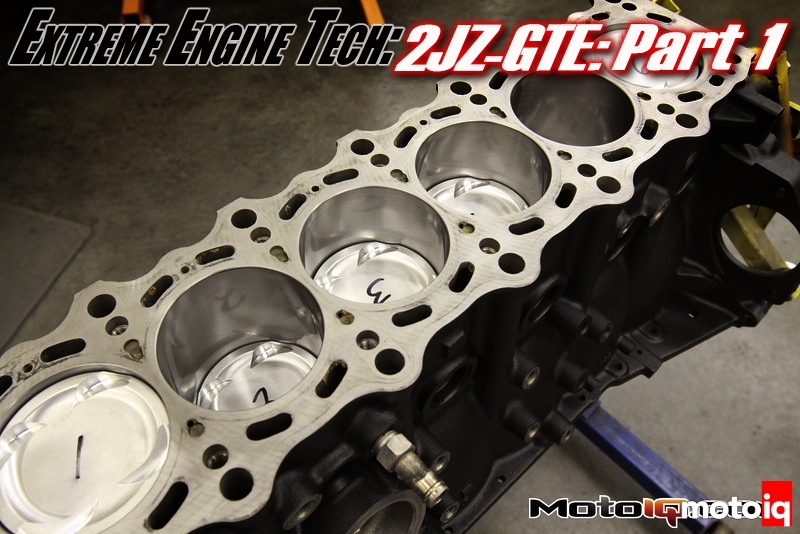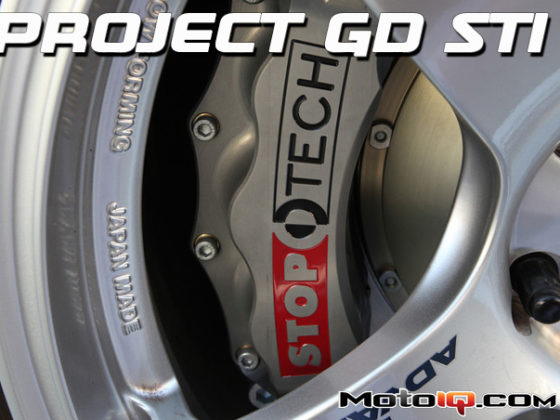
Extreme Engine Tech: 2JZ-GTE Part 1 – More Strength, Less Weight
Released in 1993, the MKIV Toyota Supra Turbo was an in-your-face time machine with an obnoxious wing, massive rear bumper and futuristic taillights. But a twin turbocharged 3-liter inline-six mated to a six-speed Getrag transmission made it a real contender, taking on the likes of twin turbocharged 300ZX's, RX-7's and 3000 GT VR-4's, and even shaking Porsche 964, NSX and Ferrari Testarossa owners in their ostrich-skin boots. But, at nearly $50k MSRP—still a chunk of change by today's standards—the Supra was overpriced, and it later dropped by ten grand.
Maybe we just didn't get it then. After all, who knew these stock drivetrains would hold 800-plus hp? Well, many get it today, and nearly two decades later you'd be lucky to find a low-mileage example for under $30k. One can argue that the Gran Turismo and Fast and Furious franchises helped its popularity, but nothing did more to earn this car's terrific reputation than its stout engine block. We just had to build one.
It's nice to know if you ever need a factory short block, Champion Toyota sells them for around $2250. Our Supra previously had one, and with a Precision 71-GTS turbo kit from Sound Performance it made over 760 WHP and 630 lb-ft at 29 PSI on pump 93 and a single nozzle methanol injection.
 |
|
At high speed, our factory internals melted a bit in cylinder #1. We think not enough methanol was making it through that cylinder's intake runner, given the sharp 90-degree turns of the factory runners themselves. We'll be addressing that in the future.
|
Our goal is, along with addressing any lubricating, airflow and fueling deficiencies, to put together a reliable and streetable 800 WHP Supra. By “streetable” we mean it has to have AC, not be overly noisy, be able to refuel at the pump and put the put the power down (within reason–we're not going to run drag radials on the street).
With a power goal set, the first order of business is turbo selection, and ours i Precision's new-school 6766. We're very excited about it, but more details on that later. In the meantime, we'll focus on the bottom end.
For pistons, we turned to JE Pistons, a household name in the piston industry. Operating under ISO 9000 quality standards, they're among the manufacturing elite. JE's new, asymmetrical 2618 T6 high tensile forged aluminum pistons are 8% lighter than their own traditional round pistons, and are an impressive 25% lighter than the factory cast Supra pistons (304 vs. 407 grams). We stayed with the stock 8.5:1 compression ratio but chose an 86.5mm piston diameter (0.5mm overbore) since our first cylinder wall was a little scuffed.
 |
|
JE's asymmetrical pistons. Check out the skirt difference. The major thrust side (exhaust, right) is left thick to cope with the cylinder pressure. The minor thrust side (intake, left) is narrow to not only save weight but also reduce friction. Weighing 304 grams each, total weight loss is 26 grams over JE's traditional pistons and 104 grams lighter than stock. They're also perfectly balanced with an offset wristpin location for quiet operation. Note the absence gas ports on the top two ring lands, these gas ports can prematurely wear the rings, making them not as desirable for long-term street engines.
|
 |
|
No confusion about which side goes where. Also, JE's asymmetrical pistons come standard with smooth finish crowns to eliminate hot spots and negate the need to deburr rough edges.
|



